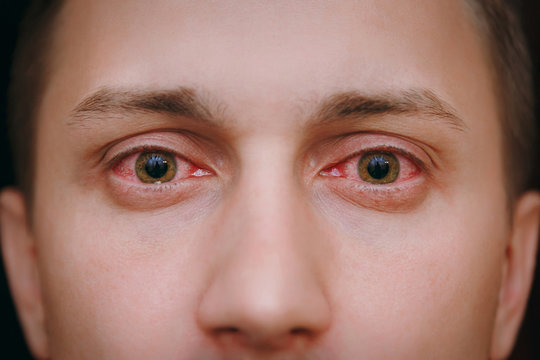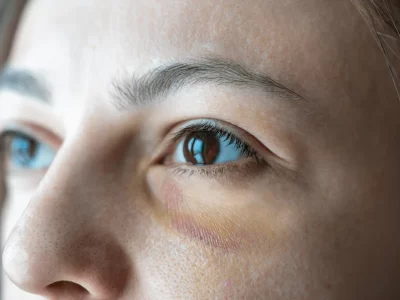Conjunctivitis, commonly known as pink eye, is an inflammation of the conjunctiva, the clear tissue covering the white part of the eye and the inside of the eyelid. It is a widespread condition affecting people of all ages, leading to eye redness, irritation, and discharge. Understanding conjunctivitis is crucial due to its contagious nature and potential impact on daily life.
Understanding conjunctivitis symptoms
Conjunctivitis, or pink eye, involves inflammation of the conjunctiva, a transparent membrane that covers the white part of the eyeball and the inner surface of the eyelids. This condition is not only common but can be quite discomforting, making awareness and proper care essential.
Types of Conjunctivitis
1. Viral Conjunctivitis: This type is most commonly caused by adenoviruses. It is highly contagious and often associated with respiratory infections such as the common cold. Symptoms include watery discharge, redness, and irritation. Viral conjunctivitis usually starts in one eye and can spread to the other.
2. Bacterial Conjunctivitis: Caused by bacteria such as Staphylococcus aureus or Streptococcus pneumoniae, bacterial conjunctivitis is marked by thick, yellow or green discharge, redness, and swelling of the eyelids. Antibiotic eye drops or ointments are typically required for treatment.
3. Allergic Conjunctivitis: Triggered by allergens like pollen, dust mites, or pet dander, this type affects both eyes and is characterized by intense itching, redness, and tearing. Management includes avoiding allergens and using antihistamine eye drops.
4. Chemical/Toxic Conjunctivitis: Exposure to irritants such as smoke, chlorine in swimming pools, or fumes can cause chemical conjunctivitis. Symptoms include redness, tearing, and a burning sensation. Immediate flushing of the eyes with water is essential, and severe cases require medical attention.
Symptoms of Conjunctivitis
Common symptoms of conjunctivitis include redness, swelling, watery or thick discharge, itchiness, sensitivity to light, and a gritty feeling in the eye. The exact symptoms can vary depending on the type of conjunctivitis. Viral conjunctivitis is often associated with watery discharge, while bacterial conjunctivitis typically involves thick pus. Allergic conjunctivitis is characterized by intense itching, redness in both eyes, and additional allergy symptoms. Chemical conjunctivitis causes pain, redness, and tearing.
Causes and Spread of Conjunctivitis
Conjunctivitis can result from various causes, including viruses, bacteria, allergens, and irritants. Viral conjunctivitis is often linked to adenoviruses, while bacterial conjunctivitis can stem from bacteria like Staphylococcus aureus and Streptococcus pneumoniae. Allergic conjunctivitis is triggered by allergens such as pollen and pet dander. Chemical conjunctivitis results from exposure to irritants like smoke and chlorine.
Prevention and Management
Preventive measures for conjunctivitis include practicing good hygiene, such as washing hands frequently with soap and water, avoiding touching or rubbing the eyes, and not sharing personal items like towels and washcloths. Disposing of contaminated items and staying home from school or work until cleared by a healthcare provider can also help prevent the spread.
Managing conjunctivitis at home involves cleaning the eyes to remove discharge, using cold or warm compresses to relieve discomfort, and avoiding contact lenses and eye makeup during the infection.
Treatment Options
Treatment for conjunctivitis depends on its cause. Viral conjunctivitis typically resolves on its own, with symptomatic relief provided by cool compresses and lubricating eye drops. Bacterial conjunctivitis is treated with antibiotic eye drops or ointments. Allergic conjunctivitis is managed with allergy medications and eye drops, and chemical conjunctivitis requires immediate flushing of the eye and medical attention for severe cases.
When to See a Doctor
It is crucial to seek medical advice if you experience severe pain or blurred vision, intense redness and swelling, symptoms that do not improve with initial care, or discharge that persists or worsens. Proper diagnosis and treatment by an eye care professional can prevent complications and ensure a quick recovery.
Conclusion
Understanding the causes, symptoms, and preventive measures of conjunctivitis can help manage and prevent this common eye condition. Practicing good hygiene, seeking timely medical advice, and proper management can ensure quick recovery and reduce the risk of spreading the infection.
Understanding Conjunctivitis: Symptoms and Treatment













